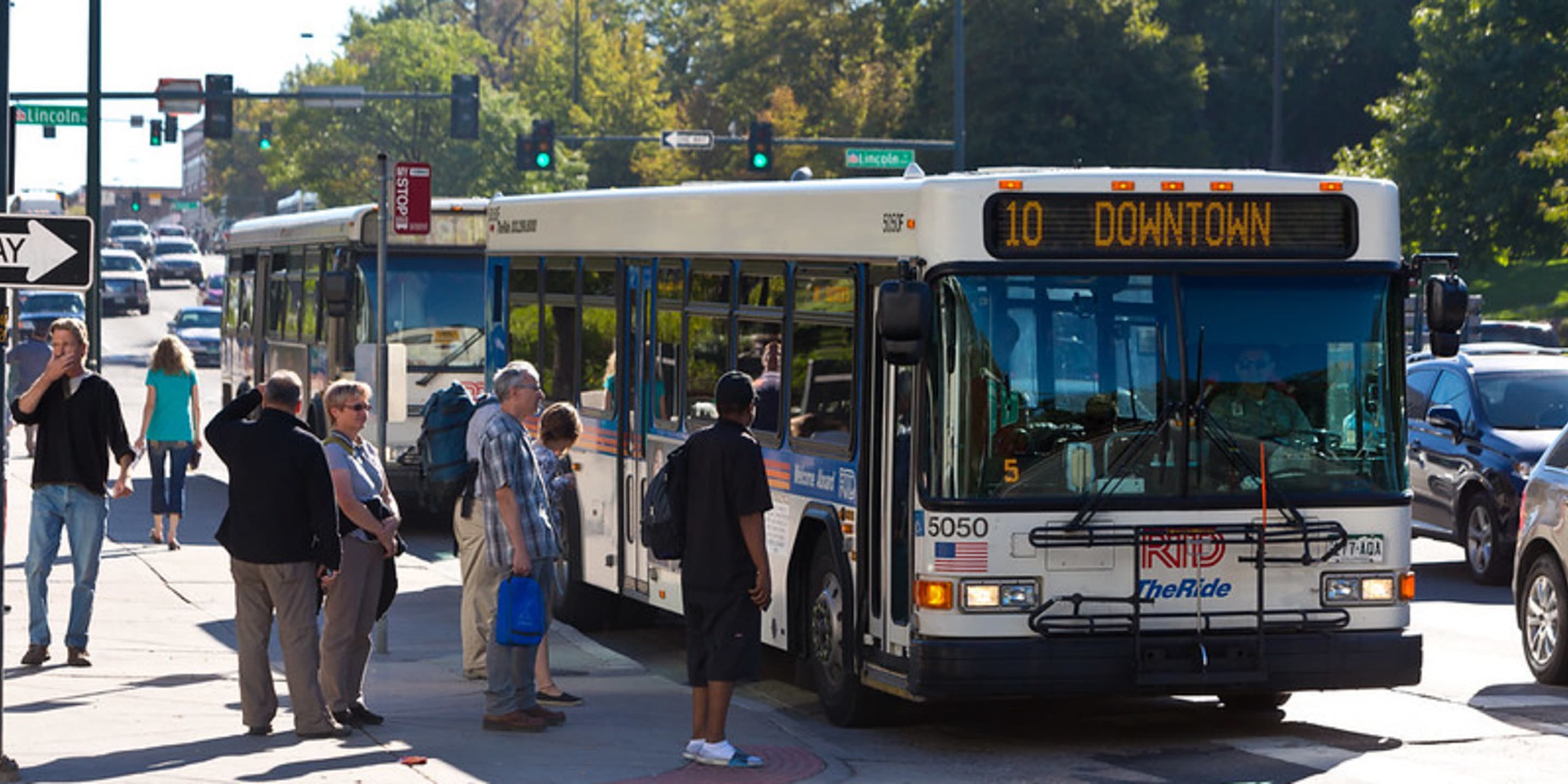
RTD has added live look-in equipment for operator, customer safety
DENVER (July 23, 2024) –– The Regional Transportation District (RTD)completed a major technology project to enhance operator and customer safety by installing live look-in equipment on all its bus fleet – a substantial safety and security update that supports the agency’s Welcoming Transit Environment strategic initiative. The new system enables RTD’s public safety dispatchers to both view and hear individuals, situations and events occurring on a vehicle in the moment. RTD began installing the new software in early 2023 for use in emergency situations.
“The ability for RTD’s public safety dispatchers to view the interior of a bus in real time should provide comfort both to the agency’s operators and to customers,” said General Manager and CEO Debra A. Johnson. “The live look-in system presents staff and police with a more granular level of detail as they respond to and resolve emergencies. It is imperative that the public feels safe and secure on RTD buses and properties. With the addition of this system, no one is traveling alone.”
The U.S. Department of Homeland Security in September 2020 awarded RTD an approximately $2.4 million grant, which paid for the live look-in software, professional services and five years of maintenance. The live look-in system supersedes prior technology, in which dispatch could only hear audio inside the bus.
With the live look-in system, RTD’s public safety dispatchers can use a secure, cellular network connection to hear audio and view video in real time from the cameras on board the vehicle. The new approach helps bus dispatch and the RTD Police Department (RTD-PD) better understand a situation, including how to assist employees and the public in a timely manner.
RTD-PD pursued the project because the prior system was approaching the end of its useful life, said Israel Laufer, the department’s Integrated Security Systems Program Manager. “We already had cellular connectivity onboard our vehicles and wanted to capitalize on it,” he said. “We were looking for technology innovations.”
Each RTD bus has the capability to house the new system, including the agency’s own vehicles and those operated for the agency by contractor Transdev.
As of today, about 19% of the agency’s light rail vehicles also have had live look-in capability added. The remainder of the fleet will be retrofitted for live look-in functionality by June 2027, in accordance with state requirements.
Commuter rail vehicles, maintained by concessionaire Denver Transit Partners, already have this capability on the company’s own private wireless network, using a system separate from RTD’s, Laufer said.
Live look-in is used to observe and report serious safety hazards, where employee or customer safety may be at risk. All incidents are tracked and recorded.
The new software evolves RTD’s ability to retrieve video for investigations in the moment, which can be crucial for police investigations where every moment counts.
“There's nothing like a dispatcher looking at the live look-in and explaining over the radio and describing the suspect, who and where he left, what station, what location,” Laufer noted. “The operator is busy driving the bus, and the live look-in system relieves the operator from focusing on a precise description: Was he wearing a red vest, a baseball hat, a black shirt?”
Employee and customer safety are priority areas of focus for RTD within the agency’s Welcoming Transit Environment strategic initiative. Measures the agency has been undertaking include growing RTD-PD to 119 officers by yearend compared with 19 officers in 2022. The agency also has been implementing Crime Prevention through Environmental Design (CPTED) efforts across the entire system.
Notably, RTD recently shared the results of its 90-day Customer Experience Elevator Pilot program as part of CPTED, which significantly reduced incident reporting or calls for service – requests made by RTD employees, customer, the public or other agencies for police assistance. As a result of the program’s success in deterring or limiting crime, the agency has plans to further expand the program beyond the current six light rail stations, with elevators programmed to maintain open doors at stations. RTD’s Customer Experience Elevator Pilot Program assessment report is available here.
Over the last year RTD also has upgraded lights, improved landscaping, added closed-circuit television monitors that display security feeds and installed smoke detectors in public restrooms across its service area to improve safety.